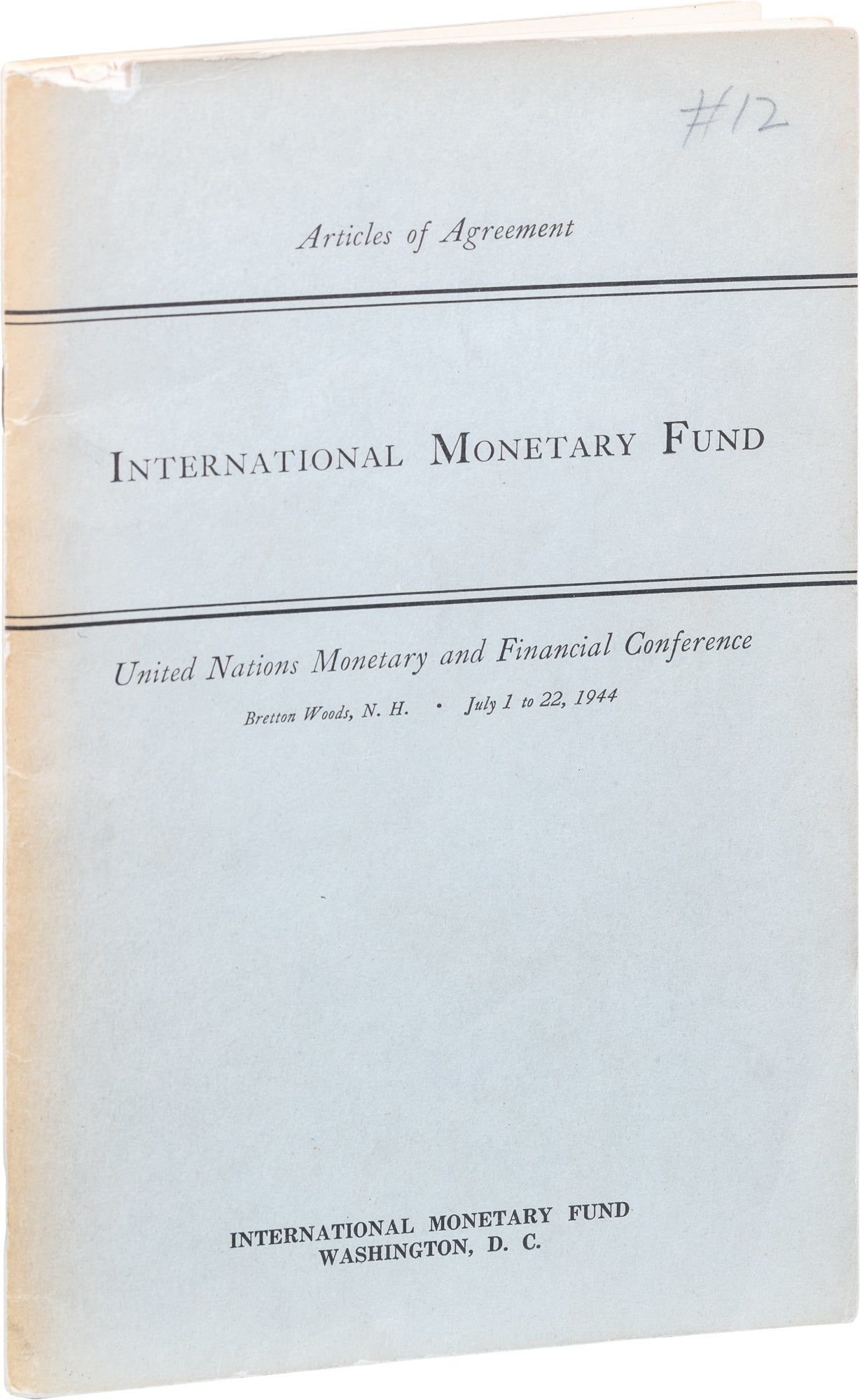Articles of Agreement; Final Act; United Nations Monetary and Financial Conference Bretton Woods, N.H. July 1 to 22, 1944
- SIGNED
- Washington DC: International Monetary Fund, 1944
Washington DC: International Monetary Fund, 1944. First Edition. Very good. Original blue/gray printed stapled wrappers. Some pencil notations, toning and a small chip to front wrapper, else very good condition. Printed by the IMF as opposed to the more common U.S. Treasury printing. 56 pp. The first American publication of the foundational charter that established the post-war international monetary system. This document emerged from the gathering of 730 delegates from all 44 Allied nations at the Mount Washington Hotel in Bretton Woods, New Hampshire, from July 1-22, 1944, to regulate the international monetary and financial order after World War II. The Articles of Agreement established fixed exchange rates with countries required to guarantee convertibility of their currencies into U.S. dollars within 1% of fixed parity rates, with the dollar convertible to gold at $35 per troy ounce. The conference was driven by lessons learned from the interwar period, with President Franklin D. Roosevelt and officials like Secretary of State Cordell Hull believing that free trade promoted not just prosperity, but also peace. The two principal architects were John Maynard Keynes, adviser to the British Treasury, and Harry Dexter White, chief international economist at the U.S. Treasury Department. While both envisioned fixed exchange rates conducive to international trade expansion, White's more limited plan for a Stabilization Fund ultimately prevailed over Keynes's proposal for a global central bank issuing a new international currency called the "bancor". The Articles of Agreement required ratification by countries representing at least 80 percent of the capital subscriptions to take effect. This threshold was reached on December 27, 1945 (over a year and a half after the conference concluded) when twenty-nine member countries had ratified the agreement, formally establishing the IMF and the system where countries kept their currencies fixed but adjustable to the dollar. This monetary architecture dominated global finance until President Nixon's "Nixon Shock" of August 15, 1971, which suspended dollar convertibility to gold and effectively ended the Bretton Woods system. The system had aimed to prevent competitive devaluations and encourage an open trading system, establishing the IMF to monitor exchange rates and lend reserve currencies to countries with balance of payments deficits. This official American publication thus stands as the foundational charter of the modern international monetary system, documenting the moment when multilateral cooperation replaced the economic nationalism that had characterized the interwar period.


